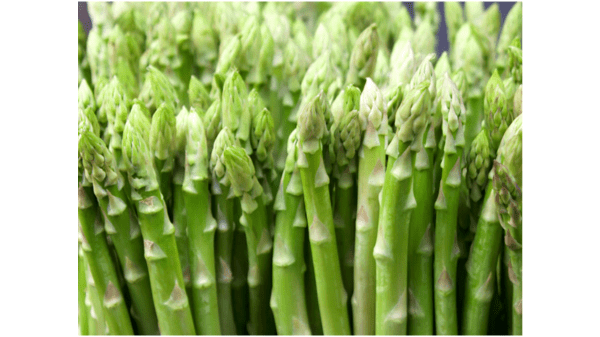Peru closed the 2022 export season with negative results, primarily due to the increase in the production in Europe, as well as the growth of the Mexican supply and the tightening of phytosanitary requirements in the U.S.
According to Agraria, in 2022, shipments of asparagus in all its presentations (fresh, frozen, and canned) totaled 172,936 tons with a value of $516 million, which represents a decrease of 4 percent in volume and 7 percent in value compared to 2021.
This drop in the quantities exported was accompanied by a reduction in the price received of approximately 3 percent, with an average price of $2.98 per kilogram.

Peru usually exports asparagus throughout the year, presenting the highest peaks during the fourth quarter. The category most sent is the fresh version, which in 2022 represented 72 percent of remittances, followed by the canned (21 percent share) and frozen (6 percent) presentations.
A key factor in this negative result is the drop in the Peruvian supply due to the fumigation requirement by the U.S. authorities to enter the market. This caused many producers to find it impossible to export to this key destination.
In addition, due to the cost that this process produces, the benefits of its commercialization were diminished for those who could afford the fumigation. Due to this, a certain stagnation has been observed in the generation of new spaces for its cultivation and, if these bad results continue, it is expected that the existing crops will be replaced.
In recent years there has been a substitution of producers that allowed a fall in production not to be recorded. The large exporters began to migrate towards more profitable products such as avocados and blueberries, while the space they left behind was being covered by medium and small producers who dedicated their land mainly to the domestic market.
Something that could improve the asparagus situation is that the requirement by the United States phytosanitary authority does not seem to last much longer, since it has been announced that this condition is expected to be lifted from the second quarter of 2023. With this, the exporters of this product could obtain relief in the difficult position they find themselves in the international market.
Another key point has been the significant growth of the Mexican supply in the international market. Only in the first half of 2022 was a large increase in production reported in key regions such as Baja California Sur (with more than 7,000 hectares of asparagus). This caused the prices received by Peruvian exporters to fall, reaching a minimum of $2.13 per kilogram on average in May.
This impact was especially observed in the North American markets due to its proximity to Mexico, and to a lesser extent in Asian markets, such as Japan or South Korea.
In the European market, the results were mixed. There was an increase in the demand for asparagus, especially in countries like Spain and France. However, the growth of production in countries such as Germany, Italy or Spain itself stopped the possible growth of Peruvian shipments. This could have happened because the high logistics costs of bringing products from Latin America helped make local producers more competitive.
In 2022, the main destinations for Peruvian asparagus were the United States (53 percent share), Spain (14 percent) and the Netherlands (8 percent).
Exports to the United States totaled 104,680 tons for $275 million, 6 percent lower in volume and 10 percent lower in value compared to 2021. In this market, the average price was $2.63 per kilogram, 4 percent lower.
Regarding shipments to Spain, they reached 24,380 tons for $75 million, 7 percent higher in volume and 9 percent higher in value compared to the previous period. The price paid in this European market for the Peruvian product was $3.06 per kilogram, 2 percent higher.
Finally, shipments to the Netherlands were 10,382 tons of asparagus for $41 million, 5 percent less in volume and 7 percent less in value. The price paid in this destination during the analyzed period was $3.93 per kilogram, 2 percent lower than the previous period.



